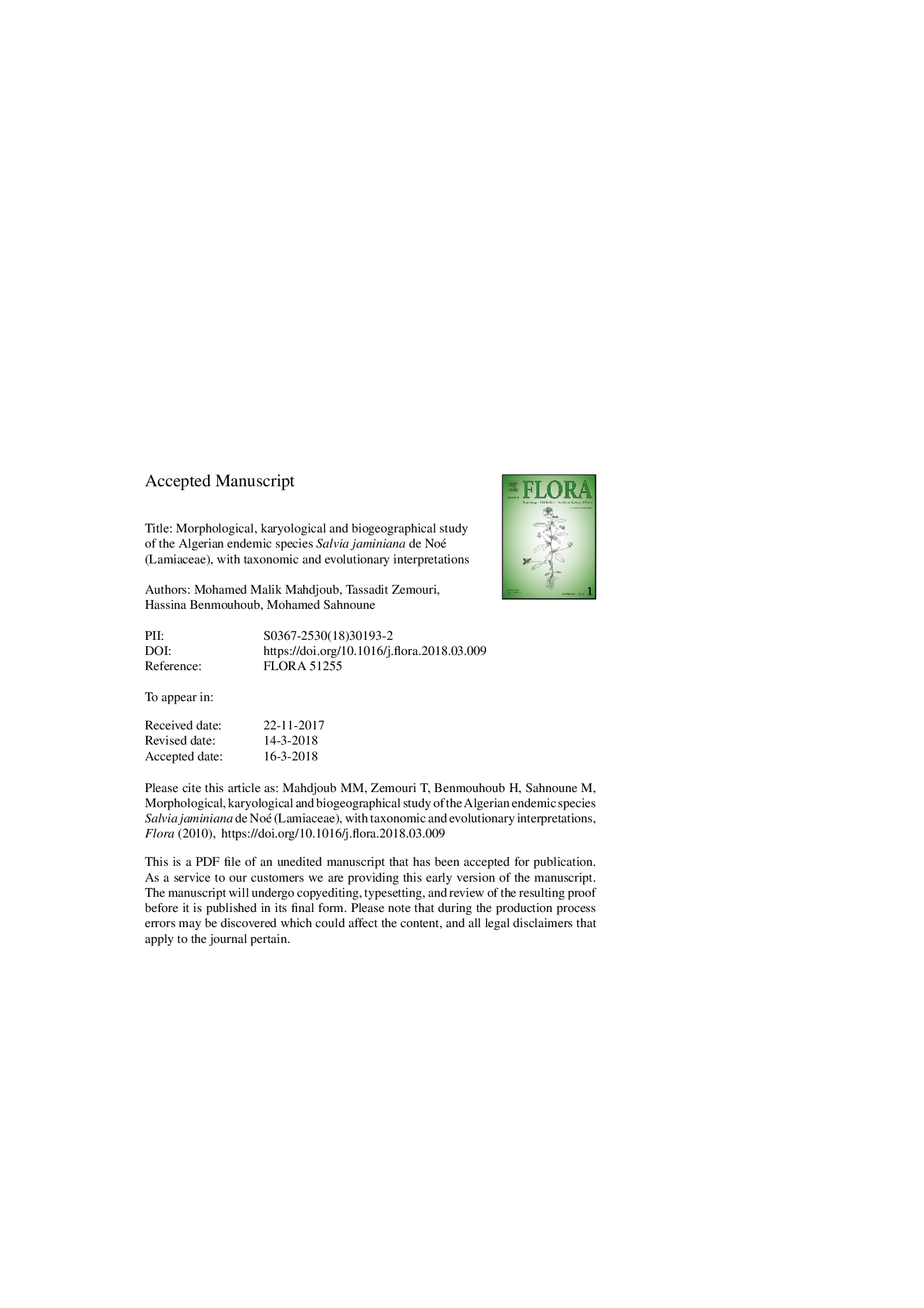| Article ID | Journal | Published Year | Pages | File Type |
|---|---|---|---|---|
| 8470159 | Flora - Morphology, Distribution, Functional Ecology of Plants | 2018 | 55 Pages |
Abstract
Like all the nineteen species of Salvia present in Algeria, especially the endemics, S. jaminiana de Noé is taxonomically and biogeographically understudied. The present paper aims mainly, after a detailed morphological and cytogenetic characterization, to clarify the botanical classification and delimit the area of distribution of this rare species. The evolutionary aspects of its main morphological, cytogenetic and biogeographical characteristics are also addressed. The results show clearly that S. jaminiana is a threatened species restricted to the vicinity of Biskra (Eastern North Saharan Algeria), adapted to arid environment with a suffruticose habit, narrowly 2-pinnatifid leaves, densely hairy inflorescences and white flowers. Based on morphology and palynology, it belongs in Section Plethiosphace Benth. Its closest relatives are S. verbenaca L., S. lanigera Poir., S. pseudojaminiana L. Chevall., S. merjamie Forssk., and S. hasankeyfensis Dirmenci, Celep & O. Guner. Its chromosome number of 2nâ¯=â¯6xâ¯=â¯42 (xâ¯=â¯7) also strongly supports this morphological proximity because, except for the tetraploid (xâ¯=â¯9-10) S. lanigera, all the other investigated species of the group are hexaploid (xâ¯=â¯7) (S. pseudojaminiana and S. merjamie) or contain hexaploid members (xâ¯=â¯7-10) beside diploids (xâ¯=â¯7-8) and octaploids (xâ¯=â¯7-10) (S. verbenaca). The ancestral hexaploids, probably of mesic adaptation, are likely of amphiploid origin involving diploid and tetraploid ancestors. Salvia jaminiana and S. pseudojaminiana may have been derived from such mesic-adapted ancestors following the gradual aridification of the Saharan Atlas after the Pleistocene glaciations. Ecological and reproductive isolations, together with aneuploidy and amphiploidy seem to be among the key triggers of speciation in the Verbenaca group.
Related Topics
Life Sciences
Agricultural and Biological Sciences
Ecology, Evolution, Behavior and Systematics
Authors
Mohamed Malik Mahdjoub, Tassadit Zemouri, Hassina Benmouhoub, Mohamed Sahnoune,
